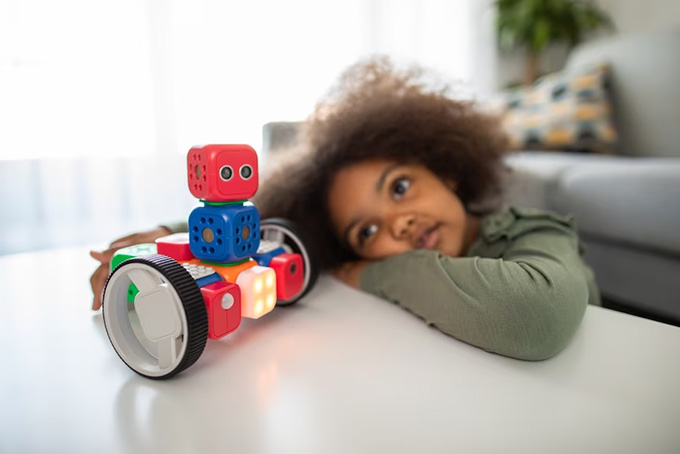
In any home with children, items inevitably accumulate. Throughout birthdays, Christmas parties, celebrations of events such as sporting victories or impulsive purchases, we find ourselves invaded by a flood of toys, clothes and trinkets.
Parting with these possessions is a completely different matter. While some children are convinced to place their old toys in solidarity collection bins or give their outgrown clothes to friends, other children have a really hard time doing these things.
Let’s try to understand why this is such a difficult process and how parents and educators can encourage children in this path.
Learn to separate
Avoiding disorder is the first reason to encourage children to sort. Research shows that clutter can have a negative impact on the mood and well-being of people who are attached to having a tidy home. However, the definition of what constitutes a cluttered space varies greatly from person to person.
If they constantly struggle to get rid of their belongings and this causes them great distress, some children may, in extreme cases, develop hoarding disorder .
From a psychological point of view, getting rid of things you own has similarities with other situations to overcome such as disappointed expectations (for example the cancellation of an event) or the breakup of a relationship. Cultivating the ability to separate objects from childhood can have positive repercussions far beyond learning to keep things in order.
Why do children get attached to objects?
Attachment to objects begins during the child’s first year of life. Infants may be distressed when their blanket or teddy bear is taken away. Researchers consider this early attachment behavior to be because objects act as a comforting substitute when the parent is absent.
As children grow, through early adolescence, the need for comfort remains one of the primary motivations for attaching to objects. However, the type of reassurance sought may become more complex as the child ages .
Over time, children may come to view a toy as a special entity. In one study, children were shown a duplicating machine based on a simple sleight of hand. They could choose to receive a copy of their toy or have their original toy returned. Children were more likely to ask for the original toy back rather than for a copy, indicating some degree of attachment to the original toy.
Some toys acquire a sort of “friend” status. This interaction is considered beneficial for psychological and social development . It is easy to imagine that it may be difficult to part with an object considered in this way.
Possessions can also act as reference points for memory . That old, faded, ill-fitting t-shirt that they’re reluctant to throw away can remind them of how special and loved they felt at their birthday party.
Just like adults, children can fall into the “I might need this later” trap . For example, a child who loved to color but has moved on to other hobbies may still be hesitant to throw away their old colored pencils, just in case.
Step-by-step support
First, try to model the behavior you would like your child to adopt. If you have trouble getting rid of your own things, how would he see the need to get rid of his?
Next, talk to the child about the motivations behind their resistance to getting rid of their belongings and help them overcome their mental blocks.
For a toy that has “friend status,” you can encourage the child to focus on other toys that are also special. Help them understand that relationships can end, which is okay. Others may emerge. Take a gradual approach by encouraging the child to give up their toy when they are ready to do so. This can help him feel that he is not getting rid of it completely, that the toy continues to exist, but with someone else.
In the case of an object that recalls good times and has sentimental value, remind them that there are other ways to maintain memory, such as photos or memories with loved ones.
For “I might need this later” reactions, one strategy is to allay the worry underlying the resistance by telling them that they can get another item of the same type if necessary. Chances are this won’t be necessary.
There will be other reasons and motivations than those mentioned above, which is why a targeted approach must be taken. To do this, communicate with your child to understand their point of view. Then, adapt your strategy to best address their specific concerns.
Try to avoid lamenting only about the mess in the apartment, which could fuel feelings of guilt and resentment in the child if he struggles to get rid of his belongings. However, by uncovering the underlying reasons for their reluctance, you can work with them to address these thoughts and emotions.
Author Bios: Shane Rogers is a Lecturer in Psychology and Natalie Gately is a Senior Lecturer and Researcher both at Edith Cowan University
